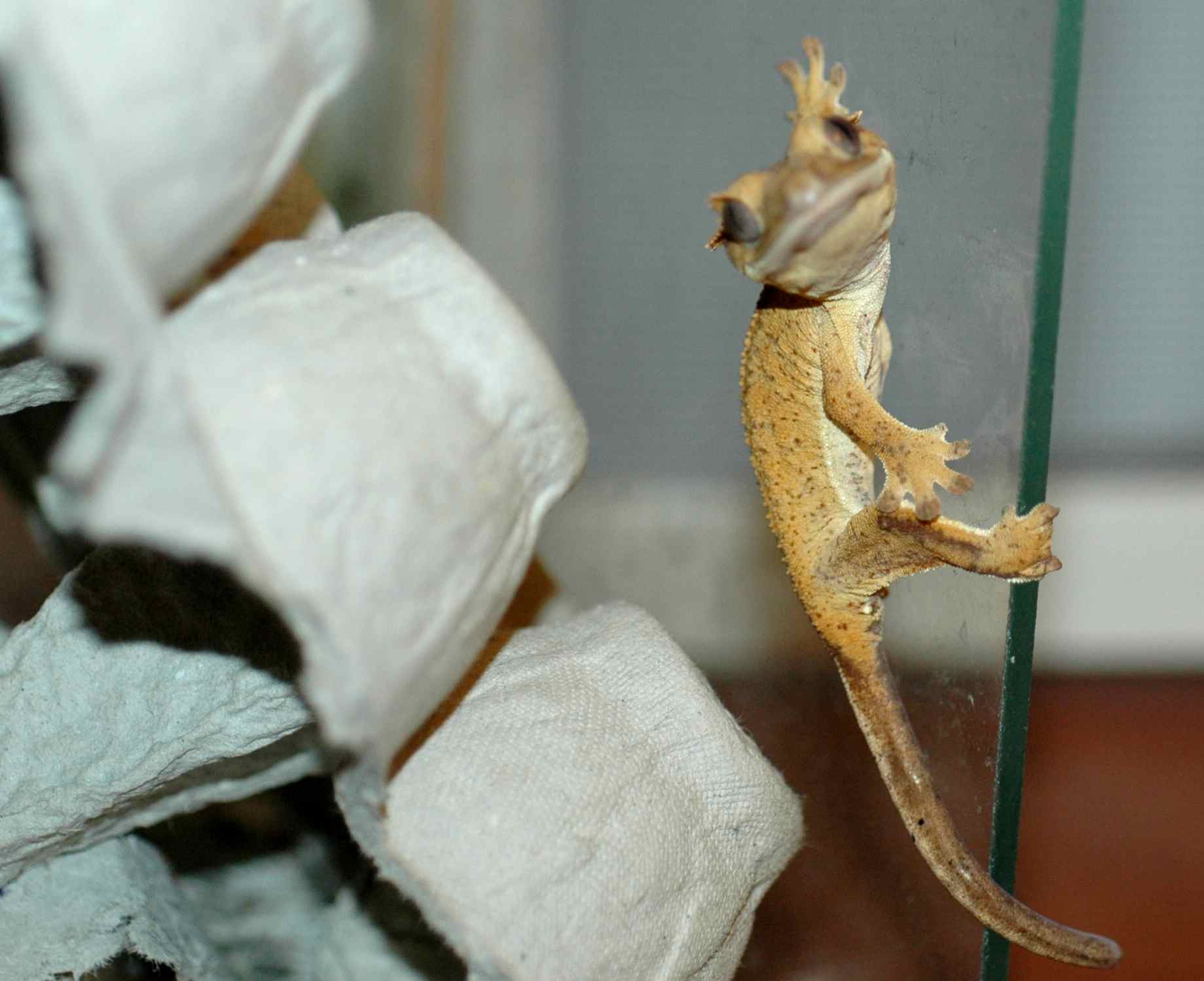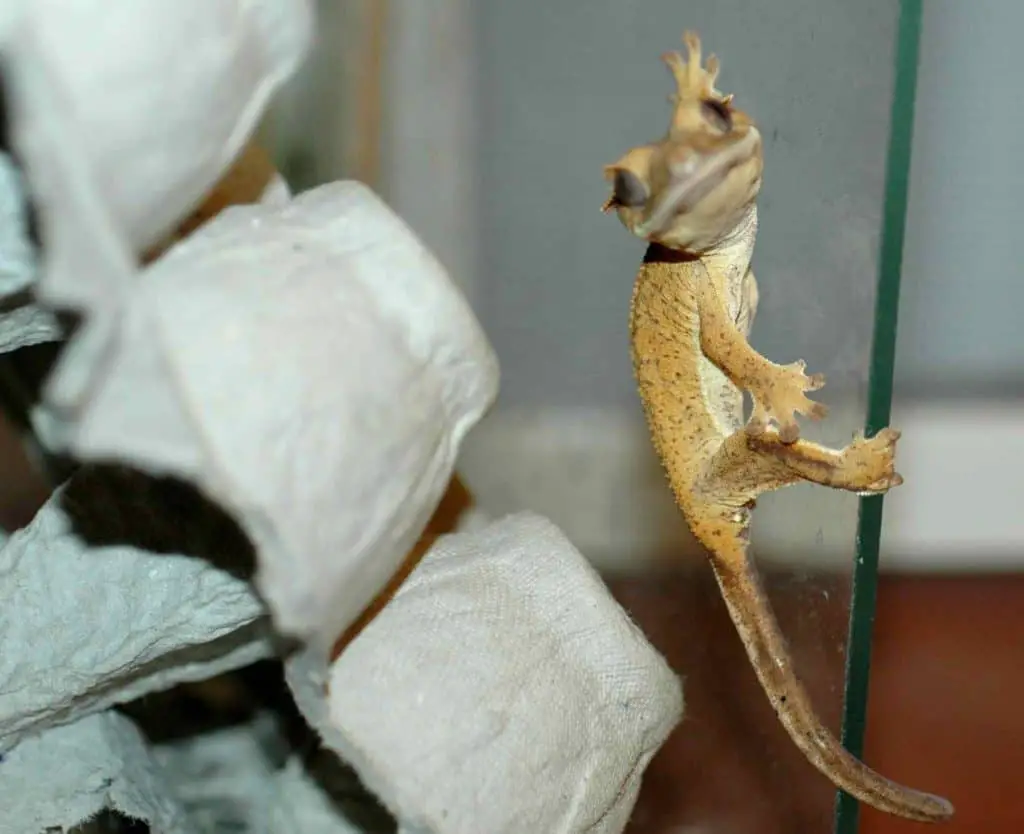Geckos are fascinating creatures that have the ability to climb walls and ceilings with ease. But have you ever wondered if they can stick to your skin as well? Many people have asked this question, and the answer might surprise you.
Geckos have unique toe pads that allow them to stick to surfaces through a special adhesive force. However, this force is not strong enough to stick to human skin, which has a different type of surface than walls and ceilings. So, while geckos may be able to climb up your walls, they won’t be able to climb up your arm or stick to your hand.
Geckos do not stick to human skin. Their ability to climb walls and ceilings is due to their unique toe pads that are covered in millions of tiny hair-like structures called setae. These setae create a weak attraction between the gecko’s feet and the surface, allowing them to easily climb smooth surfaces. However, this attraction is not strong enough to stick to human skin.

Do Geckos Stick to Your Skin?
Geckos are fascinating creatures that have intrigued humans for centuries. These small lizards are known for their unique ability to climb walls and ceilings thanks to their sticky feet. But, have you ever wondered if geckos can stick to your skin? In this article, we will explore the science behind gecko feet and whether or not they can stick to human skin.
How Do Gecko Feet Work?
Geckos have unique feet that allow them to climb almost any surface. Their feet are covered in millions of tiny hairs called setae, which are so small that they can only be seen under a microscope. These setae are what allow geckos to stick to surfaces, even when they are upside down.
Each seta is divided into even smaller structures called spatulae, which are only a few nanometers in size. When a gecko’s foot comes into contact with a surface, the spatulae create a weak molecular bond with the surface. This bond is called a van der Waals force and is what allows geckos to stick to surfaces.
Despite their incredible ability to stick to surfaces, geckos can easily detach themselves from the surface when they need to move. This is because the van der Waals force is only strong enough to hold the gecko in place, but not strong enough to resist the gecko’s movement.
Can Geckos Stick to Human Skin?
Geckos are not able to stick to human skin because the skin’s surface is not smooth enough to create a strong van der Waals force. Human skin is covered in sweat, oil, and other substances that can interfere with the gecko’s ability to stick to the surface.
In addition, human skin is covered in hair, which can also interfere with the gecko’s ability to stick. Gecko feet are designed to stick to surfaces with a smooth surface, such as glass or metal. Therefore, it is unlikely that a gecko could stick to human skin.
Benefits of Gecko Feet
Gecko feet have inspired scientists to develop new materials that mimic the gecko’s ability to stick to surfaces. These materials have potential applications in areas such as robotics, medicine, and aerospace.
For example, researchers have developed a gecko-inspired adhesive that can be used to attach medical devices to the skin without causing damage or irritation. This adhesive can also be used to attach sensors to the skin to monitor vital signs.
Another potential application of gecko-inspired materials is in the development of climbing robots. These robots could mimic the gecko’s ability to climb walls and ceilings, allowing them to access hard-to-reach areas.
Geckos vs. Other Lizards
Geckos are not the only lizards that can climb walls and ceilings. Other lizards, such as anoles and chameleons, also have adhesive feet. However, the mechanism that allows these lizards to stick to surfaces is different from that of geckos.
Anoles and chameleons have adhesive pads on their feet that secrete a sticky substance. This substance allows them to stick to surfaces, but it can also leave residue and can be difficult to remove. Gecko feet, on the other hand, do not secrete any substances, making them a cleaner and more efficient way to climb surfaces.
Conclusion
Geckos are fascinating creatures with unique feet that allow them to climb almost any surface. While they cannot stick to human skin, their feet have inspired the development of new materials and technologies with potential applications in various fields.
Understanding how gecko feet work can help us develop new technologies and materials that can improve our lives. So, while geckos may not be able to stick to our skin, they are still an important source of inspiration for scientists and engineers.
Frequently Asked Questions
Do geckos stick to your skin?
Geckos are known for their ability to stick to surfaces, including walls and ceilings. However, they do not stick to human skin. This is because human skin is not porous enough for geckos to create the necessary suction force to adhere. Additionally, human skin is covered in oils that make it difficult for geckos to grip.
It is important to note that handling geckos can be stressful for them, and they may bite or drop their tails as a defense mechanism. It is best to avoid handling geckos unless necessary and to handle them gently and with care when needed.
Why do geckos stick to walls?
Geckos have specialized toe pads that allow them to stick to surfaces. These toe pads have millions of tiny hair-like structures called setae that create a Van der Waals force between the gecko and the surface. This force allows the gecko to adhere to the surface without the need for any adhesives.
Additionally, geckos are able to control the adhesion of their toe pads, allowing them to release and reattach quickly and easily. This ability allows geckos to move quickly and efficiently across vertical and even upside-down surfaces.
Can geckos harm humans?
Most species of geckos are harmless to humans. However, some species have been known to bite if they feel threatened or cornered. These bites are usually not harmful, but they can be painful and may cause swelling or redness.
In addition, some species of geckos carry potential diseases such as salmonella, which can be transmitted to humans through contact with their feces. It is important to take precautions when handling geckos or cleaning up after them to prevent the spread of disease.
Can geckos be kept as pets?
Yes, geckos can be kept as pets. There are many species of geckos that make popular pets, including leopard geckos and crested geckos. These geckos require specific care, including proper lighting, temperature, and diet.
It is important to research the specific needs of the species you are interested in before bringing a gecko into your home. Additionally, it is important to purchase geckos from reputable breeders and to avoid purchasing wild-caught geckos, which can be stressed and may carry diseases.
How do geckos reproduce?
Geckos reproduce sexually, with males fertilizing the eggs of females. Most species of geckos lay eggs, which are typically deposited in a hidden location, such as under rocks or in vegetation.
The length of incubation varies depending on the species, with some species hatching within a few weeks and others taking several months. Once hatched, baby geckos are fully independent and begin hunting for food immediately.
Why Geckos Are Sticky Without Being Sticky
In conclusion, while geckos do have the ability to stick to various surfaces, their ability to stick to human skin is limited. This is due to the lack of natural oils and surface area on the skin compared to other surfaces geckos are accustomed to. Additionally, the composition of human skin is not the same as the materials geckos typically adhere to.
However, it is important to note that there are certain types of adhesive materials specifically designed to mimic gecko feet and can be used to stick to human skin. These materials have potential applications in the medical field, such as for wound closure or drug delivery.
Overall, while geckos may not naturally stick to human skin, their unique adhesive capabilities continue to inspire scientific innovations and advancements.


